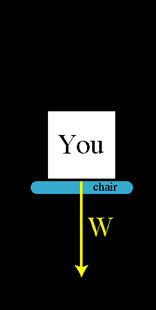
There are two types of forces, contact, and field. Forces are vector quantities. When you add two or more forces together you get a resultant vector called the net force.
The forces acting on an object are vectors, and have magnitude and direction. These vectors can be depicted in a force diagram using ARROWS that point in the direction the force is acting. Scientists usually use right as positive and left as negative.

Look at the forces in the diagram. One person pulls on an object with a 100 N force to the left, and another person pulls on the same object with a 70 N force to the right.

Add the two vectors together, and my resultant is -30 N. That means my net force is -30 N, or 30 N to the left.
Some of the forces that you will see in diagrams have special names. The most common are weight, friction, tension, applied force, and the normal force.
It is often useful to analyze forces acting on an object by the use of a free body diagram. A free body diagram is different from a force diagram because the free body diagram only shows the object in the problem and arrows representing the forces acting on the object. No other objects, walls, or the floor; no other vectors showing displacement, velocity, or acceleration; and no reaction forces from the object.
Let's draw a free body diagram of you sitting in your chair.
Weight acts down. The normal force of the chair acts up.

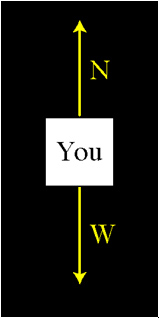
Your weight W acts down. The normal force acts up. These are the only two forces acting on you in this diagram, so you are DONE! This is your free body diagram.
Notice that in the final diagram you do not see the chair, and you do not see the reaction force of you pushing back on the chair.
In the previous example, the normal force balanced the weight. This is not always true. If you are sitting in your chair and someone pushes down on your shoulders, the normal force increases and is greater than your weight. If someone lifts up on you as you sit, the normal force would be less than your weight.
Let's look at an example with a force applied at an angle. Here is the force diagram for a box being pulled across a rough floor using a rope that makes a 30° angle.
Force Diagram:
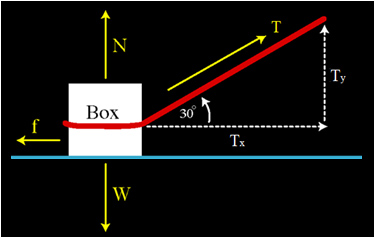
Free Body Diagram:
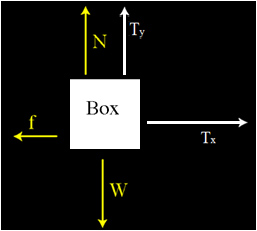
Examine the free body diagram. Since the rope pulls up on the box at the angle, the tension has a y component, Ty that pulls up. Ty and the normal force share the job of supporting the box's weight, and therefore the normal force decreases. It is now less than the weight.
Similarly, if you push down on the box at the angle, like you would with a lawnmower handle or on a shopping cart, the normal force increases, because the y component of the push force P pushes down on it.
Force Diagram:
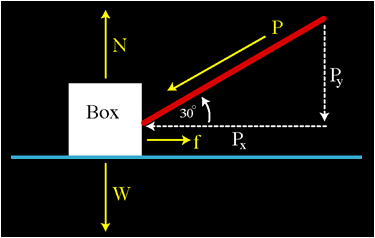
Free Body Diagram:
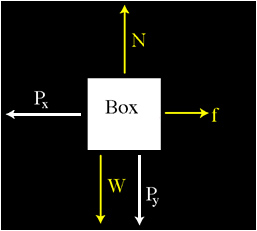
Now when we look at the free body diagram, you see that the normal force has to balance both the weight and Py.